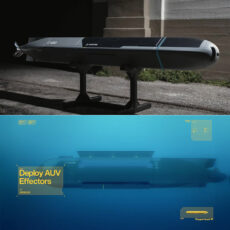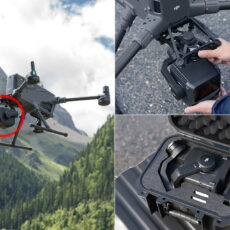
Late October is typically a quiet time in aviation, but that was not the case at a California test site. A sleek matte gray jet with a mostly empty interior took off from Victorville’s runway, rose slowly, and was able to negotiate its own path through the sky without even a remote pilot at the controls. It was a historic event; no one was inside, and the entire route had essentially been left in the hands of the YFQ-44A, also known as Anduril’s Fury.
Anduril’s engineers built Fury from scratch in less than 18 months. Starting with a design acquired from Blue Force Technologies in 2023, they set about molding a lean, mean airframe around a readily available commercial business jet engine, a Williams FJ44-4M, which has already been manufactured in large quantities. When fully laden, the finished product weighs around 5,000 pounds, has a top speed of approximately 730 miles per hour, and can reach altitudes of 50,000 feet – all while pulling up to 9 g in beautiful hairpin turns.
- Due to platform compatibility issue, the DJI Fly app has been removed from Google Play. DJI Neo must be activated in the DJI Fly App, to ensure a...
- Lightweight and Regulation Friendly - At just 135g, this drone with camera for adults 4K may be even lighter than your phone and does not require FAA...
- Palm Takeoff & Landing, Go Controller-Free [1] - Neo takes off from your hand with just a push of a button. The safe and easy operation of this drone...
Every decision that went into the creation of this machine was made with one goal in mind: simplicity. The landing gear is conventional issue from off-the-shelf machine shops; no sophisticated manufacturing are required. A variety of parts arrived from hundreds of different vendors across America, forming a wide network that has helped reduce production delays, which typically slow fighter jets. According to Anduril’s CEO, Brian Schimpf, you want to remove rid of the stumbling blocks that typically make combat planes pricey. This type is less expensive than a manned version yet has comparable firepower.
Fury is one of the air support units that pilots fly alongside in aircraft such as the F-35. It acts as an advance scout, soaring ahead to detect dangers and shoot first – however a human operator must approve each missile launch. If necessary, a simple press of the ground-based button can terminate the entire operation. During its initial flight, its systems were able to control the throttle, altitude, and direction on their own, but they were still required to return when instructed.
General Atomics developed competing aircraft, the YFQ-42A, which took off in August, not long after the Fury. Both are in the running for significant Air Force contracts through the Collaborative Combat Aircraft program. Anduril has already developed several Fury jets for further testing, including ones that will fly alongside manned planes and fire real rounds in the coming year.
Then there’s Palmer Luckey, Anduril’s founder, who sees the initiative as a war against larger competitors such as China. They may be able to ramp up similar systems at breakneck speed, gaining a significant scale advantage and entering the market first. Luckey avoids discussing specifics about what they have in the works, but stresses the need for smarter tools over none at all.
Work on the ground began in May, but it wasn’t until the last day of October that it took to the skies at Southern California Logistics Airport in Victorville, with 60 Minutes filming the journey as it glided effortlessly up against the desert backdrop. Anduril maintains a log of live testing on their aircraft, which currently largely moves at the pace of software changes rather than hardware ones. They had to bypass getting the entire remote control system operational so they could put the entire airplane on autopilot and get in the air faster. Next stop: group flights, followed by flying alongside pilots and sharing a cockpit.










